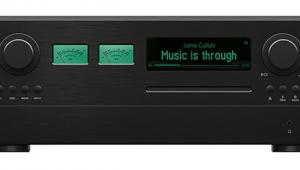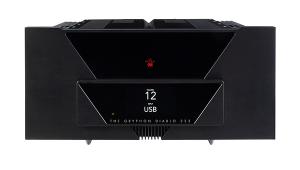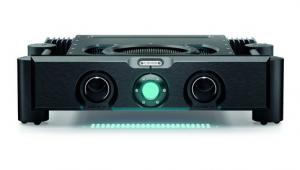Rogers Cadet Iii (Vintage)

A 10W design from the final years of the valve era, the original Rogers Cadet appeared in 1958 as an amplifier and control unit combination for mounting inside a cabinet. Its stereo successor, the Cadet II, appeared in 1962 and proved equally popular.
With the version III, gain was increased so that magnetic cartridges like the Shure M44 and M75 series could be used. This was achieved by the use of special ECC807 valves and an extra stage, meaning that the Cadet III control unit became slightly wider. Six cartridge matching networks were offered, each housed in a small metal can with a plug-in base.
Amplifier output was raised from six watts to ten. Since the ECL86 valves stayed the same, there was a voltage doubling circuit in the power supply. The amplifier circuit was otherwise conventional, using traditional auto-bias for the output stages and moderate negative feedback taken from the 10-15ohm loudspeaker output to suppress distortion and flatten the response.
Control unit and amplifier were sold as a pair and were not available separately, the control unit being powered from the amplifier via an umbilical cable which also carried the L/R audio signals along with mains power to and from the on/off switch. Later, a single-chassis version was offered with all the components mounted on one unit, although the circuit remained largely unaltered.
Setting up a system today brings with it the nuisance of non-standard connectors, in particular the screw terminals for the loudspeakers. The correct solution is to have adapters made up rather than to start drilling holes in the gear. The same applies to the inputs: the sockets are a bit too close together to use modern cables with their often bulky plugs, so short adapters may be necessary.
Easy to enjoy
With 10W on tap, sensitive loudspeakers are a must – forget any ideas of Rogers LS3/5As! For this review we used Monitor Audio PL100 loudspeakers and a Cyrus CD8 SE2 CD. The track ‘Fascination’ by Everything But The Girl [Blanco Y Negro] showed that the Cadet III is possessed of quite exceptional midrange clarity when used to play uncluttered types of music such as this. The treble is vivid and clean too, although we did feel that some of the usual sparkle was missing from the top end of many of the recordings tried.
One real problem though was the bass, which lacked any real sense of control and would often boom and swell, obscuring musical detail present further up the register. With the Cadet III the 60Hz rumble filter proved to be a useful feature for combating bass waywardness. It does not solve the problem, but at least reduces it to a more acceptable level.
Surprisingly, the Cadet III will play loudly quite easily but the sound became compressed, and lost some of its fine midrange detail, at a point somewhat short of the hard limit where rapidly increasing distortion was encountered.
All the same, the sense of scale which the Rogers could lend to Dvořák’s Slavonic Dance in A flat, Op.72 [DG] was creditable for an amplifier of this size. Here the overly fulsome bass was less of a hindrance giving the piece a rich and luxurious flavour which made it especially easy to enjoy.
Imaging was perhaps a little blurred but the string and the brass sections of the orchestra were still easy to place in a soundstage which, while not being particularly three-dimensional, did fill the area between the loudspeakers.
Another surprise came in the form of an impressively quiet background. From our listening position the performance was marred neither by hiss nor hum: a fine result for a valve amplifier of this topology and generation. This isn’t a modern sounding amplifier, its ‘period’ looks are matched by a ‘period’ sound, which is something that goes a long way to explaining why it is still popular among lovers of vintage components.
Verdict
Despite its 10W power output and loose bass, the Cadet III is enjoyable to listen to. It can be an excellent introduction to classic valve amplification. Working examples should be plentiful at around £250, but steer clear of anything that has been greatly modified.
Originally published in the 2013 Yearbook

















































